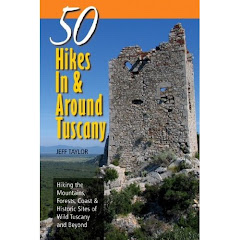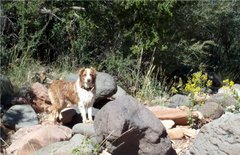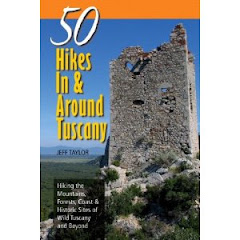Distance: 5.1 miles (8.2 km) or 6.8 miles (11.0 km) with optional side trip to the river.
Elevation: 2300 - 985 feet (700 - 300 meters)
Difficulty: Strenuous
Best Time of Year: October-May (watch for ticks, insects, humidity, and storms in summer and ice in winter)
Many people have described Hemmed In Hollow, in the Ponca Wilderness of the Buffalo National River as perhaps the highlight hike in all of Arkansas. Since our exploration of the state has only just begun, I can not say that definitively. But, I can say it is a spectacular hike which provides both an interesting cross-section of the geology and ecology of the Ozarks, but also some interesting parallels to the riparian canyons and formations we've hiked in the Mogollon Rim of Arizona.
 |
| Oak/Hickory Forest |
The trail begins in an oak/hickory forest with scattered shortleaf pines and eastern red cedars. The trail is pretty level at first as it slowly descends. But, once you reach the edge of the hill, it begins to descend much more rapidly, with numerous rock steps there for your convenience. When you arrive at an intersection less than 1/2 mile down the trail, stay straight. There was a sign there, but it was laying on the ground when we went past. This is the "bluff trail" you are crossing.
From here the trail steepens even more and in addition to the rock steps, there are some steep drops over the rock formations. Along the way, there are tantalizing glimpses of the wilderness and rocky cliffs of Hemmed In Hollow between the trees. But, no place to actually take any pictures of it.
 |
| Trying to see the landscape through the trees |
 |
| A better glimpse |
Well, that is until you reach the 1.6 mile spot. Then, the trail arrives at a rocky outcropping with an excellent view across Hemmed In Hollow to the falls below. There was virtually no water when we arrived, so the falls were nothing more than a wet part of the cliffs. But, it is probably pretty spectacular when the falls are raging.
 |
| View of the falls from the overlook |
A little bit lower beyond the overlook is the trail junction. To the left, you can head 0.7 miles to the Hemmed In Hollow Falls and to the right you can descend down 0.8 miles to the Buffalo River. Most trail descriptions ignore this side trip to the river and thus talk about Hemmed In Hollow being 5 miles roundtrip. But, if you have the time, I recommend this side trip to the river. It's a beautiful area.
 |
| The view along the river |
The trail down passes through some interesting forest types and rock formations.
There is a column of rock with cacti on top and some open pine/cedar stands.
 |
| Interesting rock formations along the river |
Once you arrive at the river, turn left and follow the river a few hundred meters down stream to see the neat cliffs and rocky ledges pictured above.
 |
| Shagback Hickory along the trail |
OK, once you are done eating lunch at river head back up the slope and then at the trail junction, head down to Hemmed In Hollow. There is actually a route directly up from the river, which would allow you to make a loop instead of backtracking. We walked on it a bit on the way back when we did a wrong turn. But, it requires you to cross the river from the bottom. It would have been possible now, but if water was flowing more heavily, I am not sure how easy it would be. Some people we talked to said they use it when they are floating the river.
 |
| It's hard to capture Hemmed In Hollow on camera because of the trees |
On the way down to Hemmed In Hollow, you will be passing through some beech stands. Beech are fairly rare in Arkansas and this is an exceptional stand with some really large specimens. The trail descends into the hollow and then into the back of an amazing amphitheater hundreds of feet high. It is reminiscent of formations we've seen in Utah.
 |
| Approaching the falls |
Unfortunately, the waterfall was just too high to capture by camera, given we were standing directly under it. But, it certainly was an amazing place and I highly recommend visiting. This is the highest waterfall between the Rockies and the Appalachians at 240 feet tall. The water just just trickling now, but I am sure it is a torrent after a summer thunderstorm.
 |
| Rocky cliffs along the sides of the trail |














































